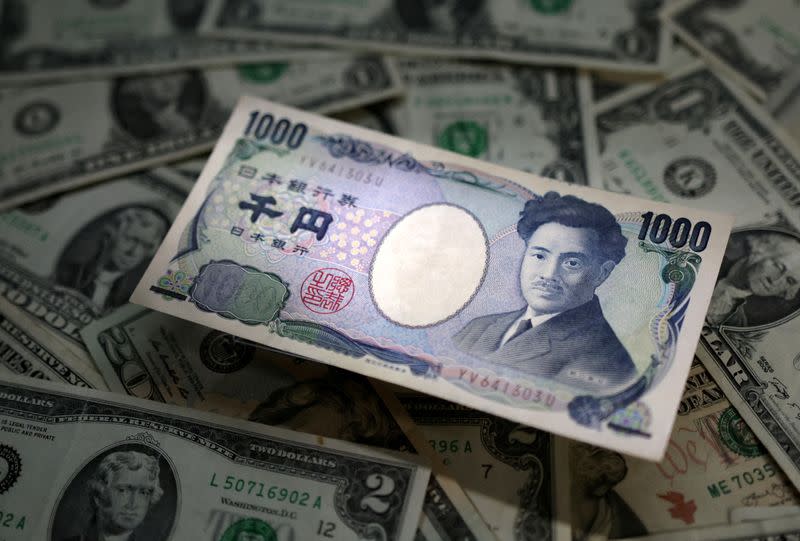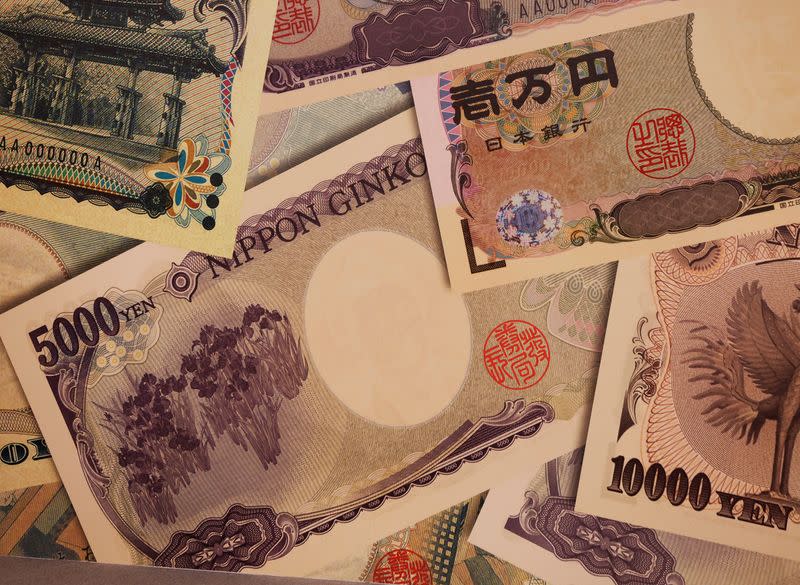Explainer-Why is the Japanese yen so weak?
SINGAPORE (Reuters) - Japan's yen is at three-decade lows and under enough pressure to prompt strong official warnings of intervention to prop it up.
The yen has fallen despite Japan's first interest rate hike since 2007 and optimism about the economy. It traded at 153.24 per dollar on April 10, its weakest since 1990 and in real terms it is at its weakest since at least the 1970s.
A weaker yen is a boon for Japanese exporters' profits, and for tourists visiting Japan who find their currencies going further, but it squeezes households by increasing import costs.
Here are some of the reasons for the slide:
RATES
Interest rates and momentum are powerful forces in foreign exchange markets. Both are against the yen. The yen has been steadily falling for more than three years and has lost about a third of its value since the start of 2021.
The yen is also the lowest-rate, or yielding, G10 currency. That means investors are borrowing it cheaply and selling it to invest in higher-yielding currencies, driving its price down.
These deals, known as a "carry trades" are particularly attractive when broader market volatility is low, as it is right now, as the fundamental rate difference drives markets.
Short-term Japanese rates are held below 0.1% and are not expected to rise much further.
Short-term U.S. rates are at 5.25-5.5% and a U.S. rate cut isn't expected until September or November.
The U.S.-Japan government bond yield gap at the 10-year tenor is almost 370 bps.
RELOAD
Japan's central bank made a historic shift out of negative interest rates in March. But the move was so well advertised, and has not put future sharp hikes on the table, leaving investors comfortable to add to short yen positions.
Yen shorts, by value, hit a decade high in April.
The rates picture is also keeping big Japanese investors' cash abroad, where it can earn better returns.
Japan Post Bank and Japan Post Insurance, among the largest financial firms, told Reuters their portfolios won't be radically changing in response to the BOJ's policy shift.
RESPONSE
The yen's dollar exchange rate has broken the level that drew intervention in 2022 and markets are on edge about the potential for government yen buying in support of the currency.
Finance Minister Shunichi Suzuki pledged "decisive action" against speculative moves late in March, language that preceded previous yen-buying intervention. Traders are now focused on the 153 to 155 range as an intervention red zone.
REAL TERMS
A real effective exchange rate index value of 70.25 for the yen in February is the lowest since the Bank of International Settlements' records began in 1994 and lower than any of the Bank of Japan's retrospective projections, which date to 1970.
That means tourist dollars go further than they have for generations and has tourism booming. Japan's current account has been in surplus for 13 months with help from tourism income and February's 2.79 million visitors was a record for the month.
Domestic consumption, however, has been a weak spot in Japan's fragile economic recovery as households tend to be net importers and face higher prices due to a weak yen.
Beyond Japan, some analysts say the yen's weakness threatens to erode the competitive advantage of Chinese manufactures, and speculate it could be behind recent falls in the yuan - though authorities in China maintain a close grip on the currency.
(Reporting by Tom Westbrook; Editing by Shri Navaratnam and Christopher Cushing and Miral Fahmy)


